The Past And Future Of Magnetic Poetry, The Populist Product That Began With A Sneeze
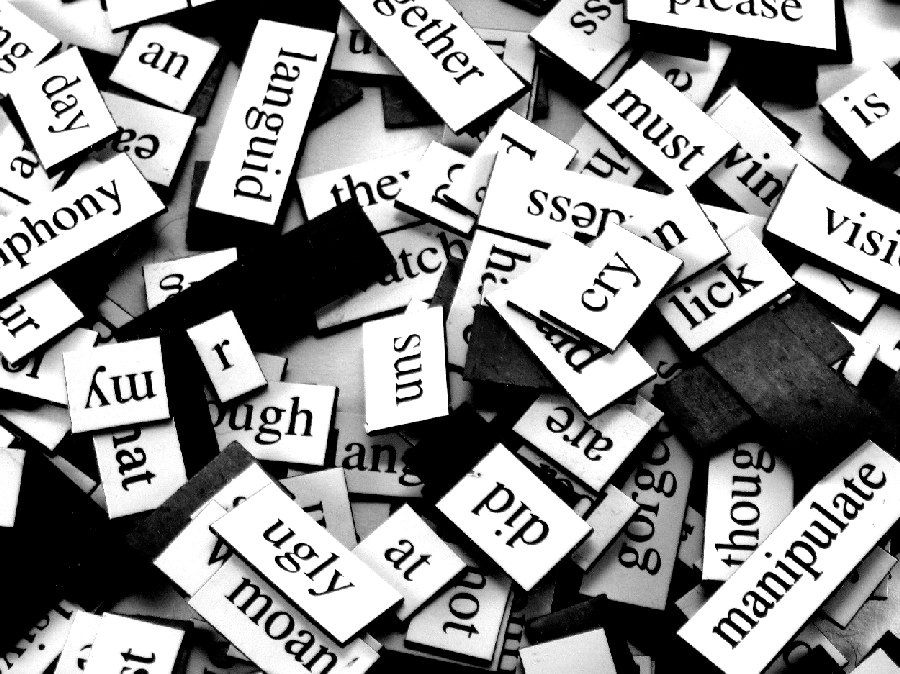
Magnetic poetry tiles, just begging to be recombined. (Photo: Steve Johnson/Flickr)
Dave Kapell, the inventor of Magnetic Poetry, never meant to be a businessman. He was thrust into what became his life’s work by one well-timed sneeze.
In the late 1990s, you couldn’t hunt for a snack in an American home without coming across a magnetic poem or two. But in the decades since the product first stuck itself to the collective consciousness, fridges nationwide have slowly begun shedding their words. The history of the form itself, though, goes back much farther than Kapell’s sneeze—and the increasingly digital future will likely only widen its reach.
In 1993, Kapell was living in an 8-person co-op in Minneapolis, pursuing songwriting, his true passion, in between shifts at his data entry job. One night, he was trying to bust writer’s block using the cut-up method, in which you chop magazines or other texts into bite-sized pieces and mix them up for inspiration. He had a pile of clippings all arranged when his allergies kicked in. “One of my roommates was working at a pizza place, and they had misprinted their advertising fridge magnets with the wrong phone number on them,” Kapell says in a phone interview. “She brought them home thinking that maybe somebody might have a use for them. When I sneezed and all my little slips of paper blew all over the place, I thought, oh, I’ll stick little pieces of magnets on the back of each one and then stick ‘em onto a cookie sheet.”
“And that was the first magnetic poetry kit.”
The kit sat beside his desk until a different roommate wanted to actually bake cookies for a party, at which point he transferred his invention to the house fridge. Guests loved the words even more than the cookies. A few ordered kits of their own. “Within a month of the party, it was like I was selling drugs out of my house,” Kapell told The Wall Street Journal in 2011. “It went viral before viral was a term.”
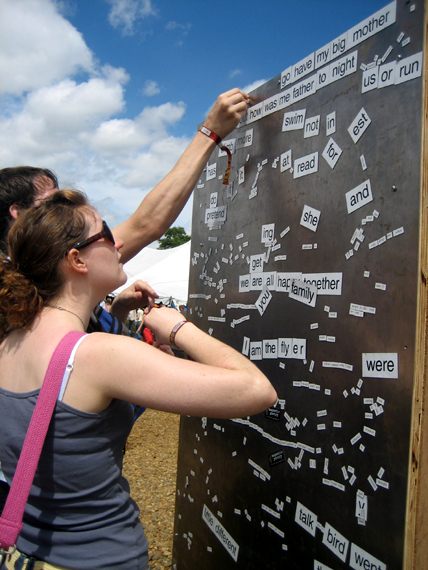
Happy collagers at a communal magnetic poetry wall in Suffolk, England. (Photo: Flickr/Dani Lurie)
In conversation, Kapell seems like a human version of his product, a scattered collection of esoteric but surprisingly deep interests. He still writes songs (he’s written “hundreds and hundreds,” he says). He owns 70 ukeleles and blogs extensively about mushroom foraging. As a child, he trained houseflies. And although he never planned for it, he has, from the beginning, approached the business side of Magnetic Poetry with the requisite stick-to-it-ive-ness. He jumped on his early luck, working all day every day to expand his product’s reach. He solidified the design (“it’s just a standard Times font…it looks like most books, you know?”), outsourced the manufacturing, and hit the pavement at toy conferences and craft fairs, wooing big-box stores and small retailers alike.
He also perfected what he calls his “recipe,” the perfect mix of nouns, verbs, adverbs and articles that allows for easy phrase-making. ”At trade shows, everyone would say, ‘everybody wants to be you,’” he says. Just a year after his musical writer’s block, he was a whole different kind of rock star.
The sneeze, the magnet surplus, the well-timed party—all make a fitting origin story for a product that’s basically serendipity on your fridge. It’s also the 1990s version of a tale that has played out cyclically. Creative types have discovered and rediscovered the power of word collage since at least the 1920s, when provocateur Tristan Tzara showed up at a Dadaist rally and wrote poems-to-order by pulling words out of a hat. His “To Make A Dadaist Poem,” from 1920, is a set of cut-up instructions followed by a tongue-in-cheek guarantee: “And there you are—an infinitely original author of charming sensibility, even though unappreciated by the vulgar herd.” Thirty years later, Beat artist Brion Gysin was razoring paper for an art project when he realized the sliced-up newspaper underneath was even more interesting. Kapell’s immediate inspiration was David Bowie, who he saw using the cut-up method on MTV.
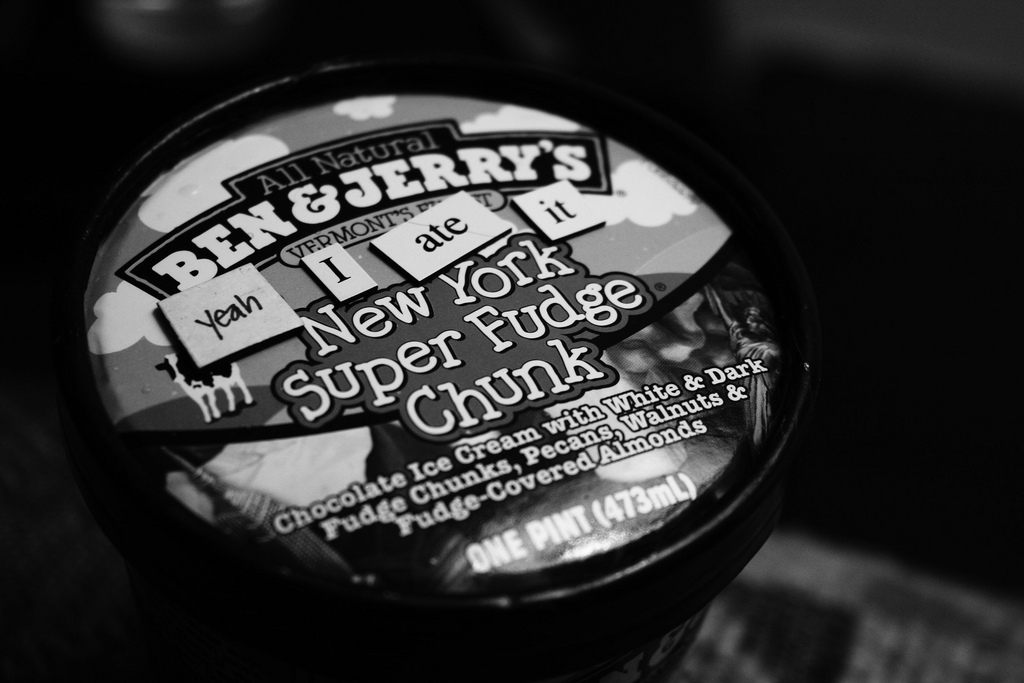
It can also be used to leave messages. (Image: Sarah Reid/Flickr)
Before Kapell, the world’s greatest cut-up evangelist was William Burroughs. He venerated the technique—“the best writing seems to be done almost by accident,” he professed—and borrowed it for Naked Lunch. Burroughs cited Joyce, T.S. Eliot, and Rimbaud as seminal cut-uppers, but rather than using the method to stick it to Tzara’s “vulgar herd,” he emphasized its populist streak. “Cut ups are for everyone,” he wrote in 1963. “Any body can make cut-ups.” If you believe Poet Laureate Robert Pinsky, everybody wants to make them—in 1997, he wrote in the introduction to The Magnetic Poetry Book of Poetry, “When you see these little words scattered on a refrigerator door, and feel a desire to shuffle them around, you are responding to some of the deepest urges in the human animal.”
Kapell has leaned into the vulgarity of the herd, and the deepness of their urges, making sure his kits include words where “one of the meanings is kind of naughty” (like “rose” and “sausage”). He’s also very aware that he’s part of a legacy. “Who knows how long people have been cuttin’ stuff up?” he asks rhetorically. “I guess my innovation was to put it on magnets.”
Whatever you want to call it—innovation, accident, stroke of capitalist genius—this decision was key. By removing the messiest step from the cut-up technique, it made the barrier to entry knee-high. It boxed up the creative process, putting it in the checkout aisle and then, once on the fridge, directly at eye level. It let us indulge all these instincts at once—toward communication, creation, jokes, profanity—and layered the results on the domestic experience. From the end of the 20th century to the beginning of the 21st, it turned kitchens everywhere into an inescapable id pastiche.
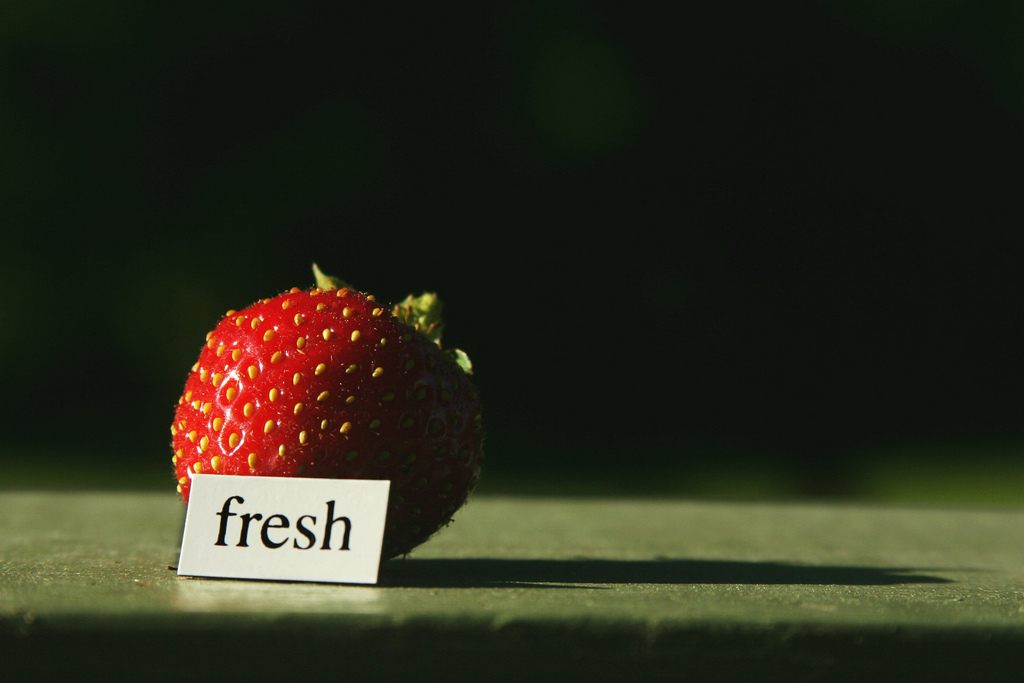
Another versatile word. (Photo: Sarah Reid/Flickr)
Tour American kitchens today, though, and you’ll see a lot more naked fridges. Our age-old impulses haven’t gone away—changes in technology have just encouraged us to take them elsewhere. ”It used to be the fridge door was the center of the home,” Kapell says. “That’s where people would hang their kids’ art, leave notes for each other, put pictures, all that stuff.” Now, all that stuff is in our phones and on Facebook, and the rise in popularity of what Kapell calls “the chef-industrial kitchen,” with its sleek and unsticky stainless steel surfaces, has left a whole slew of magnets belly-up.
Cut-ups, too are alive and well on the internet, from the giant collage that is Tumblr to streaming news pieced together from Associated Press briefs. And there are, of course, magnetic poetry apps. Meanwhile, Kapell keeps up with the times, churning out theme kits multiple times per year. Recent offering include “Bacon Poet,” “Mustache Poet,” and “LOLCat Poetreez.” “We always have meme-related kits,” Kapell says. “We’re trying to stay on top of things.” Even if those things won’t always be fridges.




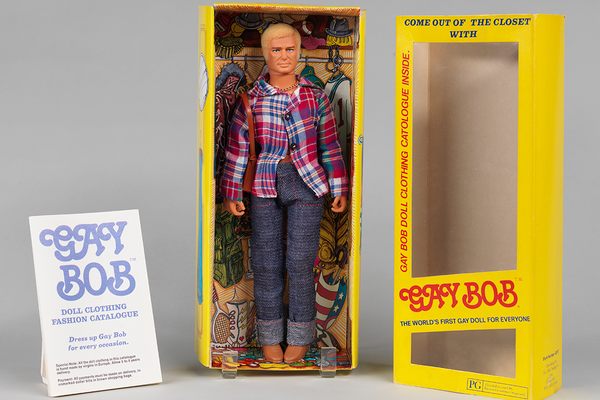



Follow us on Twitter to get the latest on the world's hidden wonders.
Like us on Facebook to get the latest on the world's hidden wonders.
Follow us on Twitter Like us on Facebook